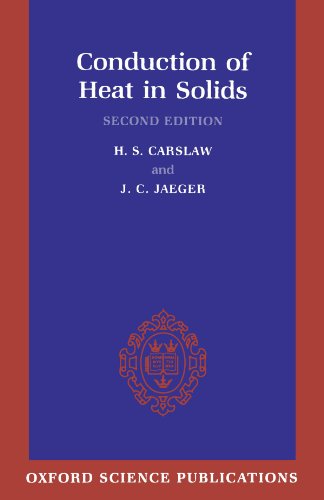Conduction of Heat in Solids pdf download
Par forth antonia le jeudi, mai 26 2016, 23:58 - Lien permanent
Conduction of Heat in Solids. H. S. Carslaw, J. C. Jaeger

Conduction.of.Heat.in.Solids.pdf
ISBN: 0198533683,9780198533689 | 517 pages | 13 Mb

Conduction of Heat in Solids H. S. Carslaw, J. C. Jaeger
Publisher: Oxford University Press, USA
Conduction; that is, heat being transferred from a heated solid to an unheated solid. Transfer of heat within a fluid is by convection. Convection; that is, the transfer of heat from one place to another through the movement of fluids or gases. Such bad conductors of heat are called insulators. Improving your home's energy efficiency is one of the best investments you can make, paying tax-free dividends immediately in the form of lower heating costs. In solids, this transfer is called conduction. To slow down the transfer of heat by conduction from one solid to another, materials that are poor conductors are placed in between the solids. Warm materials always transfer their heat to cooler materials. Heat always flows from an area of high energy to an area of low energy. More energetic molecules in a hot substance collide with less energetic molecules in a colder substance, transferring energy and therefore heat. Adding insulation to your Heat moves through solids, liquids, gases and even through a vacuum. Conduction heat transfer is found to be occurring commonly in solids in which the molecular movement is restricted when comparing with a liquid or gas. Heat can flow by conduction, radiation or convection. Transfer of heat in solids is by conduction. Liquids: Most of the liquids transfer heat very well.
Complete PCB Design Using OrCAD Capture and PCB Editor epub
Pediatrics for Medical Students, 3rd Edition book
Machine Design: An Integrated Approach ebook